Shillong: A lot of questions remain unanswered about what exactly happened on the morning of 21 January in Meghalaya’s East Jaintia Hills district, when six miners fell 170 feet to their death at a coal mine in the Sorkari Dienshanlalu village near Rymbai.
There are reports that the crane they were using to extract coal malfunctioned, sending the six men hurtling into a tunnel dug up for mining, but the government says it is still looking into the circumstances of the accident. It is not known yet if the coal mine in question was abandoned or legal, and the owner hasn’t been officially identified either.
Apart from these, the accident has brought up some old questions that have surrounded coal mining in Meghalaya for years — questions that blew up two years ago with another tragedy in the East Jaintia Hills.
On 13 December 2018, 15 miners died when an illegal “rat-hole” mine — deep narrow tunnels dug into the ground to find coal — at Ksan got flooded by water from the Lytein river nearby. In the wake of the accident, the National Green Tribunal (NGT) fined the state government Rs 100 crore for illegal coal mining.
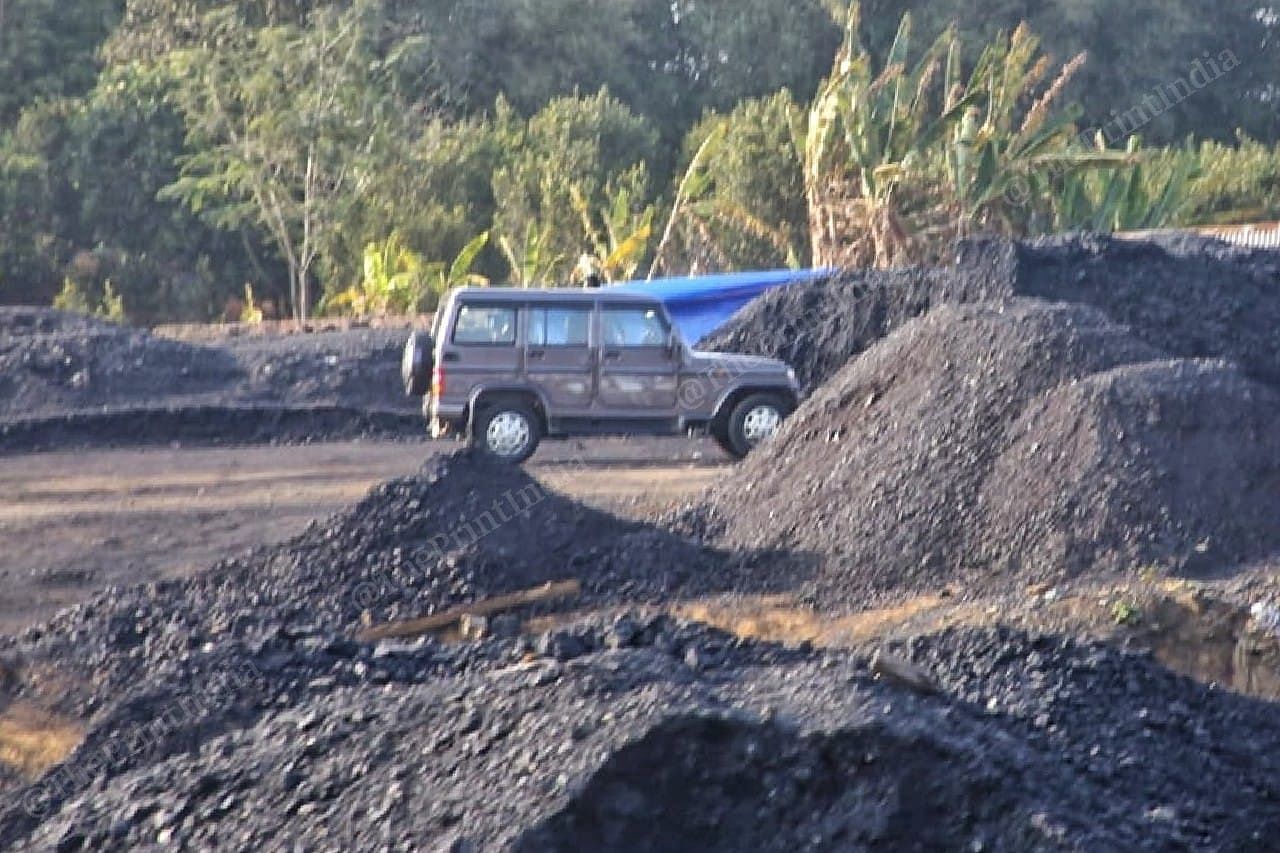
A major revenue generator for the state, coal mining in Meghalaya has also been under the scanner for its impact on local ecology. Among other implications, it has been reported that unscientific mining practices have led many water bodies to become acidic.
Under the Mines and Minerals (Development and Regulation) Act, 1957, miners are supposed to register themselves and follow certain standards, but illegal mining is said to be rampant in Meghalaya, primarily through the precarious rat-hole mines, which require labourers to plumb depths of up to 400-500 feet — over twice the height of the Qutub Minar in Delhi — in search for coal. Earnings for labourers range from Rs 600-700/day to Rs 1,500-1,600/day.
Many people from neighbouring Assam also work in the mines. According to insiders, some who die in unreported mining accidents but remain unidentified are buried in graveyards earmarked for the purpose.
The workers who sign on for mining know it is dangerous, but often take it up in the absence of an alternative. Even so, one shaken village in Meghalaya’s Jaintia Hills that lost three men in the 2018 accident has sworn off the profession.
Also Read: Search for Meghalaya miners’ bodies has become an expensive & hopeless wait for a miracle
Families left grieving
The six labourers who died on 21 January were from Barak Valley in southern Assam.
Five have been identified as Ali Hussain (40) and his two brothers, Dilwar (35) and Moqbul (45), Abdul Chobur (30) and Jalaluddin (28). They had arrived in Meghalaya from their villages — Jalalabad in Karimganj district, and Kalain in Cachar — just two months ago. One of the miners is yet to be identified.
Jalaluddin, the youngest, didn’t immediately die, say local residents. He is said to have called his family at 6.30 am last Thursday, around the time the incident happened, but was found dead later.
Ali, Dilwar and Moqbul, who had been inside rat-hole mines earlier, were the breadwinners for their families. Their father Mahmudur Rahman is now taking care of his 14 grandchildren, including Ali’s youngest, a two-month-old boy.
“Before leaving the house, Baba told me to study well and not miss school,” said another of Ali’s seven children, Sultan, 5, who is a Class 1 student at Jalalabad Lower Primary School.
So far, the Meghalaya government has not announced any compensation for the miners’ families.
“As of now, we haven’t cleared any compensation because we have to learn exactly what’s happening there,” said Meghalaya Revenue & Disaster Management Minister Kyrmen Shylla.
“Until we have any report from police and the district head, we cannot declare anything. There are norms to follow,” he added.
The police, meanwhile, says an investigation is under way. It is yet to be ascertained, they add, if the mine in question was an abandoned or a fresh coal mine, or “something else”.
“Information was received that six people have died because of some accident in that area. When we reached the spot, there was no one there except a few family members who identified five victims,” Deepak Kumar Palecha, Superintendent of Police (SP) for EJH Khleriahat, told ThePrint.
“They said the accident took place because of some mechanical failure in the crane system, and they all fell down the pit,” he said.
Palecha added that a “case has been registered” in the matter. “According to the source information, our team is working hard to get the people responsible for the incident,” he said.
Asked if they would pursue compensation, one of the miners’ family members said yes, adding that they will not sue the owner of the mine if he pays a compensation. However, since the incident occurred, no one has heard from the owner.
Why do migrant labourers go for illegal mining?
The small village of Jalalabad in the forested areas of Assam’s Karimganj has a population of about 3,000, of which 30 per cent have been engaged in illegal mining in the hills of Meghalaya, according to local residents.
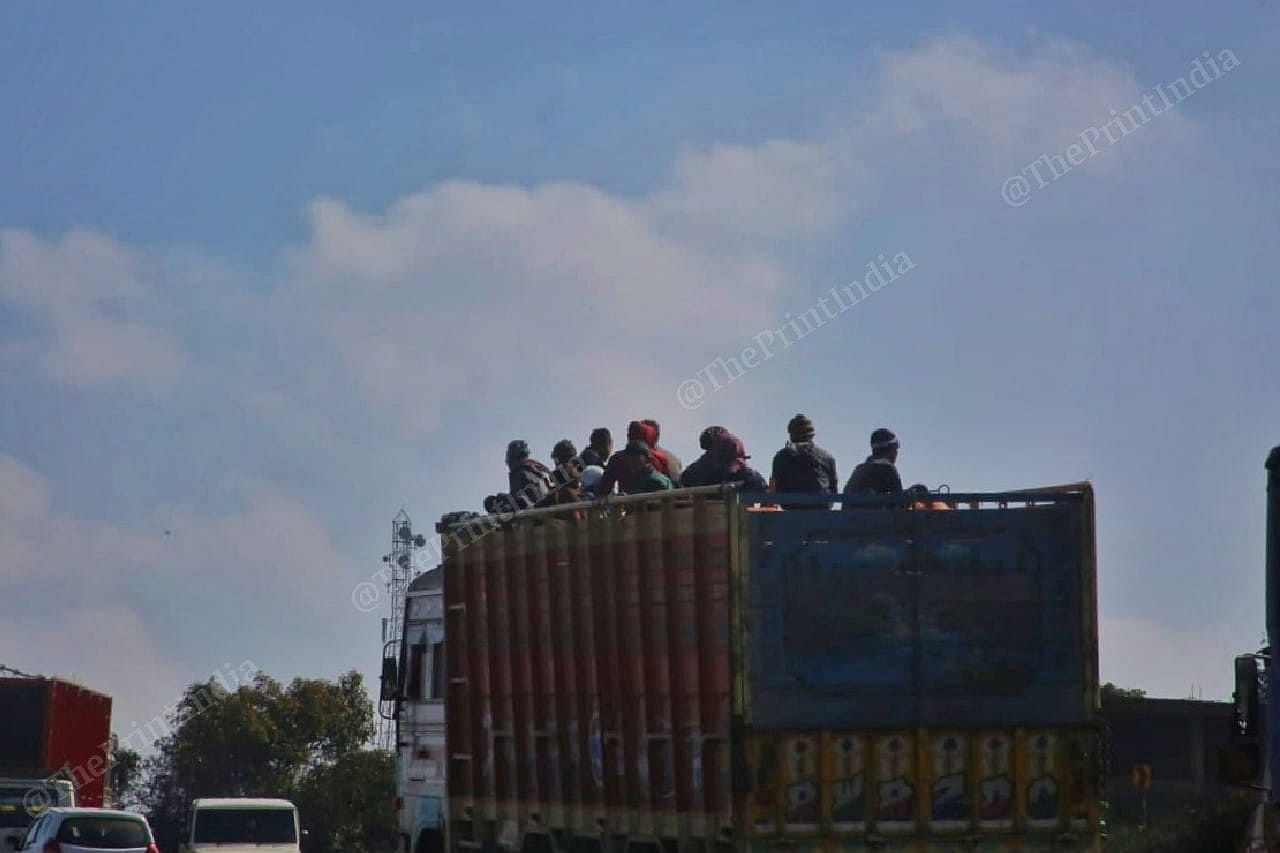
It is the only source of livelihood that can help sustain big families, villagers say.
“In most of these Muslim families in Barak Valley, there are more mouths to feed and not enough earnings. While some go to other states for work, the less educated lot goes to Meghalaya and gets involved in illegal mining — a risky work undertaken for maintaining their families,” said Hilal Khan, a member of the Karimganj Zilla Parishad.
“We have rubber plantations, rice fields and betelnut gardens, but small farmers can’t cultivate these as they don’t have space. Seasonal farming also doesn’t suffice for their needs,” Khan added.
Also Read: No miracle in 7 months, rescue team in search of Meghalaya miners wraps up mission
Tales from Lumthari
The lush rolling hills of Shillong and the neat rows of pine change into bleak landscapes as one crosses Jowai in West Jaintia Hills district to enter EJH, about 110 km from the capital city.
The fingerprint of coal is stark on the landscape of EJH — blackened in patches with cranes visible every few kilometres around the countryside.

The village of Lumthari, home to 60 families, lies in this rugged terrain. Still haunted by the Ksan tragedy — three local men, Shalabas Dkhar, Dimonne Dkhar and Melambok Dkhar, were among the 15 miners killed — the young of this village no longer opt for mining.
The families here are instead engaged in cultivation.
Kletus Charmang, whose son Shalabas was just 20 when he died at Ksan, cultivates paddy. His elder son Alek Singer, who lives in Sonapur of Jaintia Hills with his family, is engaged in jhum cultivation.
After the Ksan accident, both Alek and his father used to wait at the rescue site — where search operations continued for three months until 2 March 2019 — from the break of dawn till late evening.
Eventually, only two bodies were retrieved from the mine. Neither was that of Shalabas. The government paid a compensation of Rs 6 lakh to each of the victims’ families.
“We remember him every day. He used to run the family,” Shalabas’ mother Rita Dkhar told ThePrint at their home, as Kletus, now the sole breadwinner, returned home from the paddy fields.
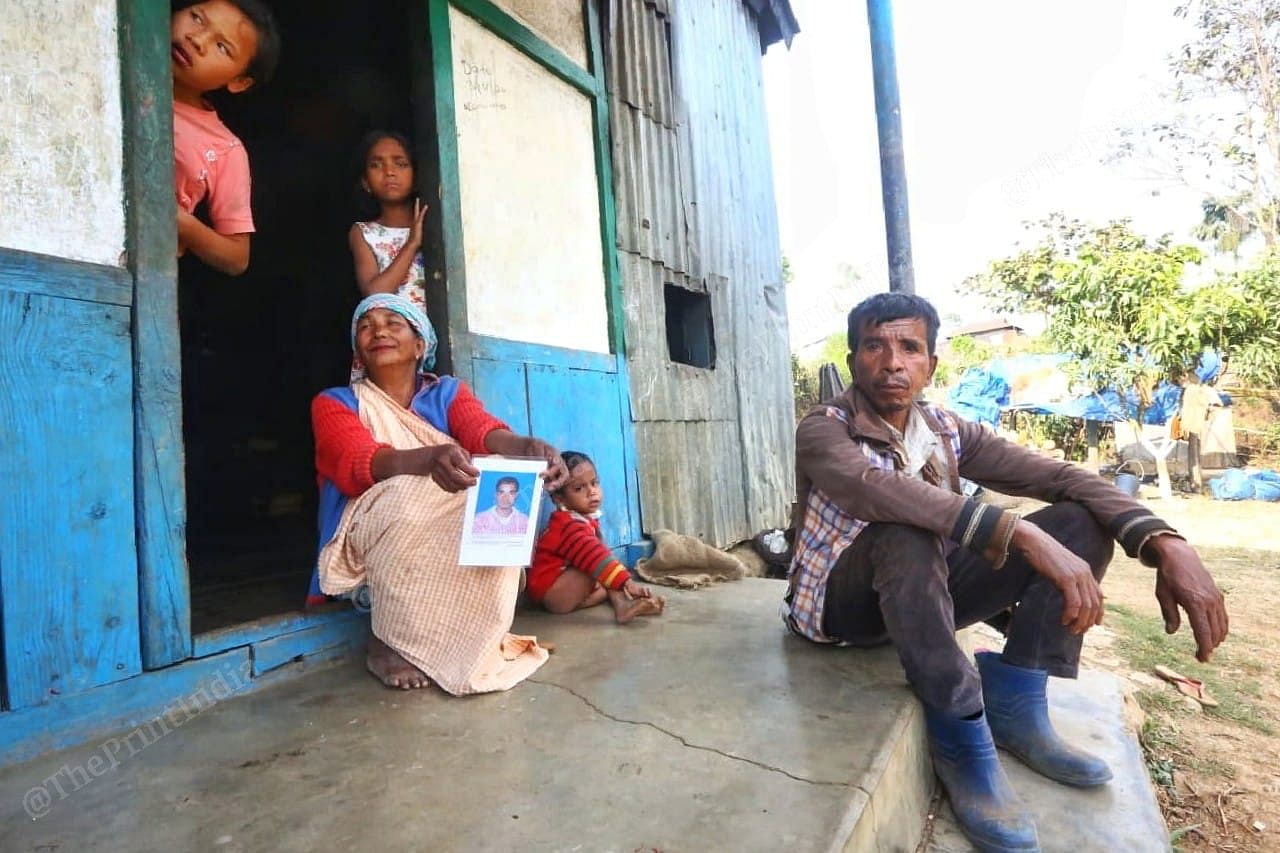
Shalabas, Rita said, had studied till Class 7. “The accident happened four days after he started working in the mine. He never went for such work before. He was a member of the church and everyone adored him,” she added.
While Lumthari has found an alternative, the same has not been true for other areas.
Kyrmen Shylla, the minister, said there are hardly any alternatives when it comes to sustainable livelihood in EJH.
“In our land, the maximum resources we have is limestone and coal. Unlike limestone, the coal can be dug out anytime and sold. Tourism is an option, but not many know what lies in EJH,” Shylla said.
“Villagers don’t allow outsiders to come, nor are outsiders willing to set foot here. Agriculture is not a 100 per cent viable option as every household does not have land to cultivate.”
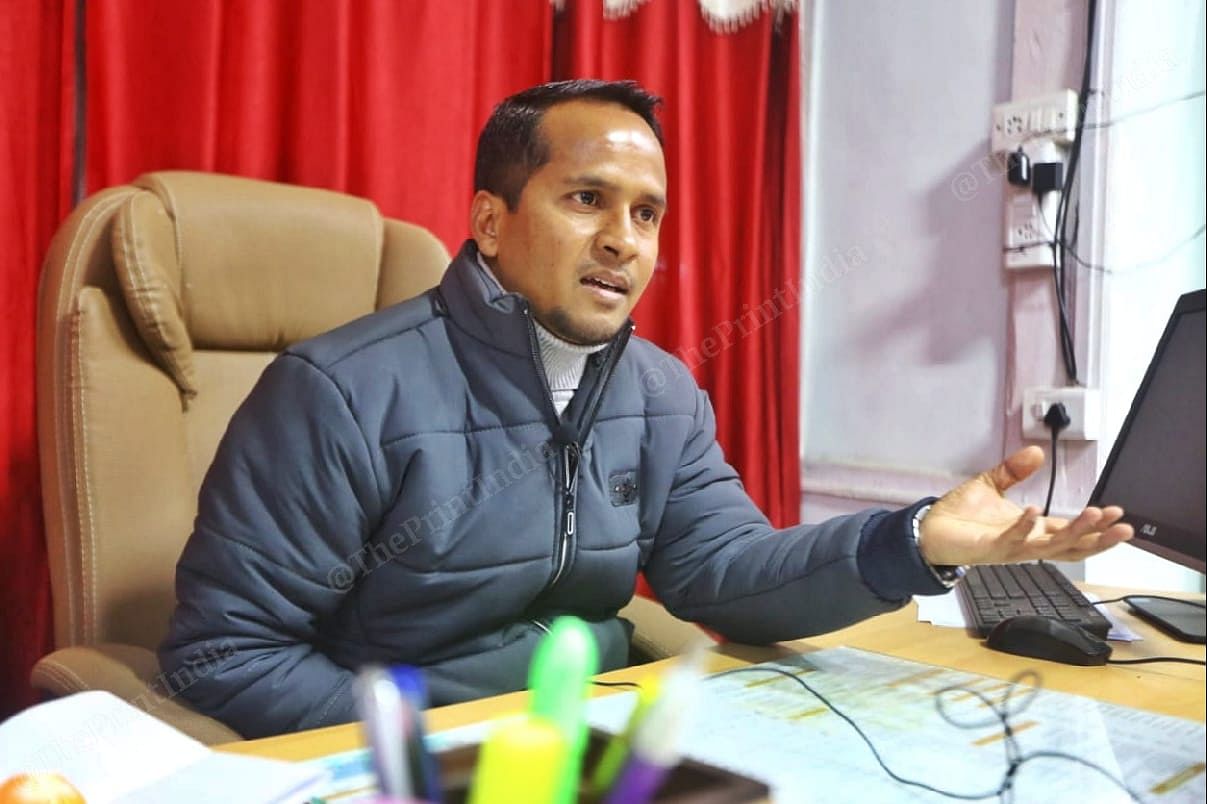
“The restrictions have affected both the rich and the poor, but the rich can still survive. Some villagers cook only pumpkin leaves for survival. East Jaintia will still depend, no matter what, how much you try — you cannot escape from coal,” Shylla added. “Every child here knows the colour of coal and can identify different types.”
Illegal mining and transportation of coal continue
Coal found in Meghalaya and other parts of the Northeast is high in sulfur and thus a greater threat to the environment. However, it’s prized because of its low-ash content — lower than other Indian coals — which makes it more efficient. Low-ash coal is considered an asset for industries such as power.
According to the Union government’s Coal Directory of India 2010-11, coal from Meghalaya is primarily sent to the other northeastern states and northern non-coal-producing states like Haryana, Himachal Pradesh, Punjab, and Rajasthan. It is also exported to neighbouring countries.
Meghalaya reportedly exports 5-8 lakh tonnes of coal to Bangladesh every year at a price of $52 (approx. Rs 3,800)/tonne.
In April 2014, the National Green Tribunal (NGT) ordered a ban on coal mining in Meghalaya, which is primarily conducted through rat-hole mines, and also the transportation of coal extracted thus.
Over the years, the ban was opposed by several organisations and political parties on the grounds that it affected the livelihood of the local population. They said the ban would serve to encourage illegal mining, noting the increased risk of accidents this prospect posed.
In July 2019, the Supreme Court revoked the ban, allowing coal mining in the state subject to compliance with the Mines and Minerals (Development and Regulation) (MMDR) Act, 1957, and the Mineral Concession Rules, 1960.
While the MMDR Act regulates mining activities around India, the Mineral Concession Rules have been framed under the law to regulate “the grant of reconnaissance permits, prospecting licences and mining leases”.
The court also said the permission of landowners should be secured for mining.
It was seen as a victory for the government’s efforts to protect the rights of the tribals.
Speaking to ThePrint, Deputy Chief Minister Prestone Tynsong said the government held workshops in 2019 to “educate coal miners to register/apply for a mining lease” in keeping with the norms of the MMDR Act.
“Unless that is done, coal mining still remains illegal. Two unfortunate incidents have happened. Our priority remains to ensure that no illegal activity takes place, be it mining or any other,” he added. “We are firm and will make no compromise on that.”
However, two years since, illegal mining is currently under way at “hidden places” inside the jungles of EJH — like Lumthari, Sutnga, Nonghthumei, Lumsngi, Bangla and Hedong, sources said. ThePrint could not independently verify the claim.
Last week, in the North Garo Hills, an incident of alleged illegal coke transportation came to light when a truck — reportedly carrying a few tonnes of coke to disguise its coal cargo — turned turtle.
After the Supreme Court lifted the NGT ban, it called for the auction of the coal that had been lying extracted in Meghalaya since the NGT ban. It directed state-owned Coal India Ltd to auction the coal — estimated by the government at approximately 32 lakh metric tonnes — and remit the proceeds to the state government, which was asked to pay the funds to the owners of the coal.
An NGT committee, set up by the green court as it looked into mining in Meghalaya, subsequently approved the transportation of 2 lakh metric tonnes of coal from these deposits for auction, on a pilot basis, and on the condition that safety and environment norms will be followed, Chief Minister Conrad Sangma announced last year.
Under regulations set by the panel in consultation with the state government, a maximum of 12 metric tonnes of coal is allowed to be transported by each 2-axle truck. However, according to activist Agnes Kharshiing, this limit is often violated.
In 2018, Agnes and her colleague were allegedly assaulted by a mob in EJH while they were taking pictures of illegal coal transportation.
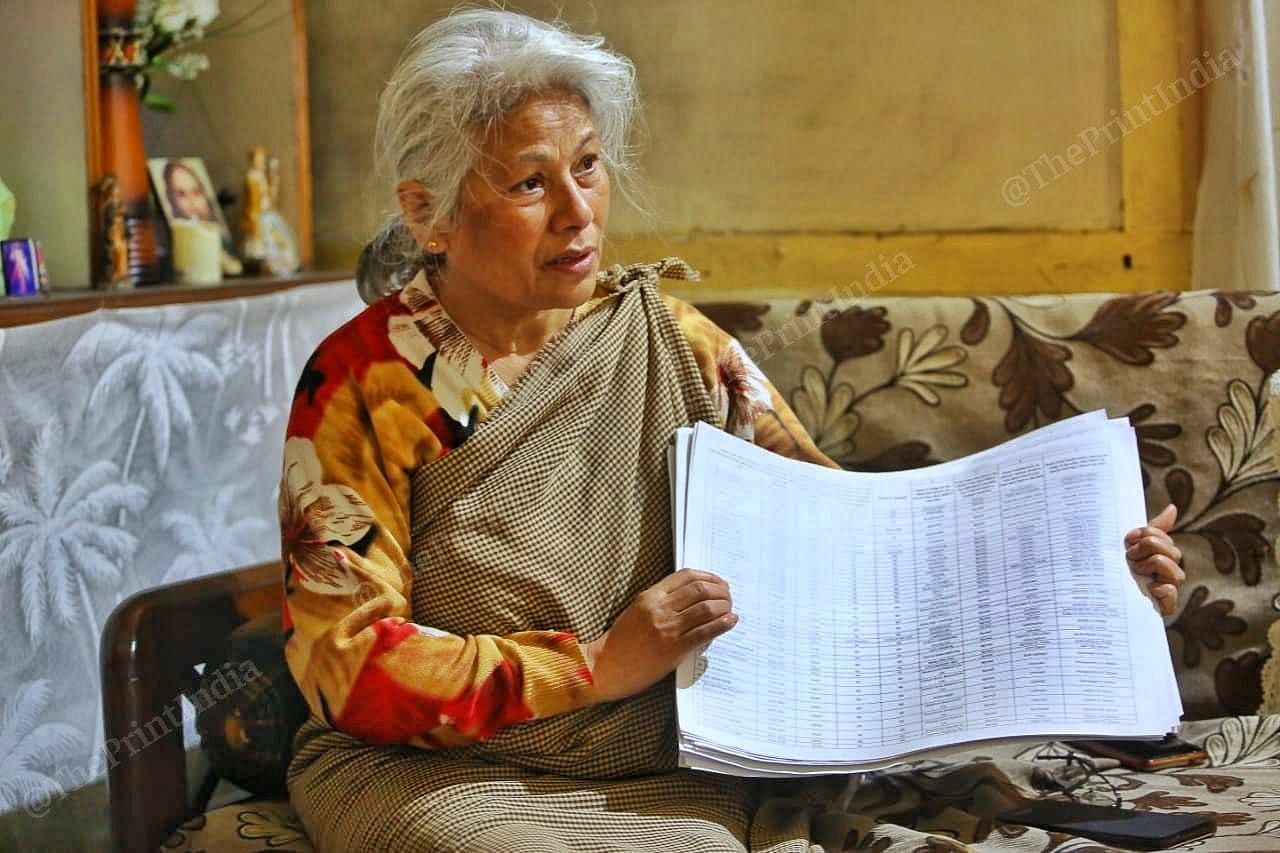
“They are just trying to push the coal illegally. Most of the coal has depleted after the NGT order. They have been transporting truckloads of coal every night,” she said. “The state government should give the correct data. An officer who held 90 trucks illegally transporting coal in 2017 was transferred.”
Illegal mining, Kharshiing alleged, is done with government connivance. “How can a government having all these BDOs, social welfare department officials, police in every district not see such things happening? And if mafia are promoted, then definitely it’s connivance,” she said. “Arrests should be made, cases should be fast tracked.”
A ‘mine sirdar’ (who supervises mining operations and manages labour) from Assam, who wished not to be named and is currently engaged in illegal mining and transportation of coal in EJH, said two of his trucks have been loaded since the past four days “with old and freshly mined coal weighing 35-45 MT”.
Speaking about the truck accident last week, Congress leader and former chief minister Mukul Sangma said, “Interestingly, only a few sacks were coke coal while others were filled with freshly mined coal. They have forged papers to transport illegally mined coal. None of the trucks is measured in spite of the Motor Vehicles (Amendment) Act, 2019,” he said.
“And the process of auction is a well-scripted modus operandi. Whenever coal is auctioned, the successful bidders are ones close to those in power… There is continuous mining, dumping and illegal transportation going on,” he added.
Chief Minister Conrad Sangma admits that the government has been facing the challenges of illegal coal mining and transportation.
“We have filed almost 2,000 cases in the past five years,” he was quoted as saying in November 2020. The state government, he said, has taken steps such as issuing high-security challans with special ink and hologram, forming a taskforce and joint patrolling of police and mining officials at different locations in the state.
Also Read: These are the 15 Meghalaya miners trapped in a rat-hole coal mine
Depths and dimensions of rat-hole coal mining
It’s not clear what will make a significant difference to the current scenario as years of government strategy — arresting people involved in illegal activities, preparing environment-friendly and scientific mining plans, developing tourism — have all failed to prevent illegal coal mining and deaths.
Talking about participation in illegal rat-hole mining, the aforementioned mine sirdar said “the labourers do it for money”.
“They get paid anywhere from Rs 700-800 to Rs 1,500-1600 as daily wages,” he added.
“Only men go down the tunnels. It can be a group of 100 labourers engaged at one particular site at a time. They camp in temporary shelters for days together and cook their own food. At about 4 am-5 am, they get into the tunnels and come out before noon,” he said.
Each rat-hole mine, he added, can be a 30 inch x 30 inch square box or bigger.
“Some of these can be 400-500 ft deep. From the bottom of the pit, horizontal chambers of 2-3 ft height and as long as 400-1,000 ft are drilled into the hills,” he said.
“These chambers are connected to the lateral mines. About 40-50 people work inside the mine at a time — aged between 18 and 50 years,” he added.
“Some mine sirdars also use children. There is 1-2 feet of water inside these mines that is constantly being drained out while work is on. And when there is shortage of oxygen, the drilling machine pipes pump out air to help them breathe,” he said.
Over the past two years, more than 20 people have allegedly died in mining accidents, but insiders say some cases go unreported.
“Two persons died on 13-14 January while working at a coal mine at Soatampai village, 20 km from Shallang under West Khasi Hills district. I heard from mine workers that a Nepali and Khasi mine worker died when boulders fell on them,” a local resident said on condition of anonymity.
When contacted, a police officer in the district said no such case has been registered.
Kharshiing said there’s “a graveyard in Sorkari, East Jaintia Hills district, where outsiders from different communities, who died during mining mishaps, are buried — most deaths unaccounted for and unreported”.
“The same happens in West Khasi Hills too — in places like Shallang and Borsora,” she added.
Between 2002 and March 2013, as many as 88 mining deaths reportedly occurred in Meghalaya due to reasons like floods, toxic gas leaks and cave-ins.
When they don’t kill, the accidents leave miners with grievous injuries.
Siswilfor, a 28-year-old miner, had to have his leg amputated after suffering an accident inside an illegal coal mine at Moolang village of Ladrymbai. Now, he is forced to beg for food to feed his three children.
“In May 2019, while I was working at a coal mine, a boulder fell from above and I lost my leg. I haven’t been able to work since then and my wife has also not found work. We live by asking people for rice to feed our kids,” he said.
Also Read: NGT panel blames ‘un-abetted illegal mining’ for Meghalaya tragedy
‘Haphazard mining’
Mukul Sangma said mining accidents take place due to “haphazard, unscientific and illegal mining”.
“The issue is of safety in mining and the need to follow statutory laws, which are designed to ensure that there’s no chance of such accidents that can result in loss of precious lives,” he added.
“Nobody is doing auditing of the safety of the mines because it is all done illegally. The greed factor probably supersedes everything else, for which accidents are taking place,” he said, adding that the scale at which illegal mining is happening in the last three years is “unimaginable”.

Asked if the erstwhile Congress government did anything to address the issue, Sangma said, “Between 2010 and 2012, we had aggressive engagement with the lobby that was against regulated mining. They created big hurdles. The whole lot was powerful with money and resources. We still tried to convince them and came up with the Meghalaya Mines and Minerals Policy, 2012. We notified it and we wanted people to comply with it. We had conducted several workshops.”
The policy was formulated to develop a scientific mining regime based on sustainable environmental management, greater economic equality, and community participation.
In 2015, the NGT observed that the mining policy of 2012 did not deal with rat-hole mining and directed the government to formulate a mining policy and guidelines to deal with all aspects of mining.
Four years later, the Meghalaya Democratic Alliance (MDA) government announced that they are preparing a mining plan in consultation with the Central Mine Planning and Design Institute (CMPDI), a subsidiary of Coal India Limited, and Mineral Exploration Corporation Limited (MECL), another central government enterprise, also taking into consideration the 2012 state mining policy.
Mukul Sangma and Tynsong said both their governments have taken action whenever irregularities have been reported.
“A standing order was issued in 2014 that still remains, and we keep reminding the district administration, including SPs, to be more proactive and vigilant — if there are any kind of illegal activities happening, the law has to be enforced strictly,” said Tynsong.
This report has been updated with additional information.
An earlier version of the report said the state mining policy required miners to procure a licence. However, it is a requirement of the MMDR Act.
Also Read: No one is bothered because we are poor, say families of trapped Meghalaya miners


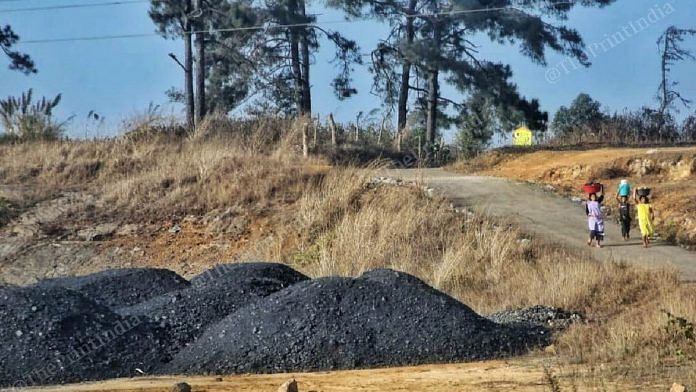

Meghalaya politics is beholden to the coal mining mafia. In fact, the “mafia” is part of the political elite in the state. And everyone benefits from this illegal activity. The ones who benefits the most are the various youth and student organizations. For example, the all-powerful and all-knowing Khasi Students Union (KSU) keeps making noise on all issues under the Sun but is quiet on this issue. Why? Because it too is amongst the beneficiaries.
Honest civil society activists like Ms. Agnes Kharshing, Ms. Patricia Mukhim and others are threatened, intimidated and at times brutally silenced by the mafia. All under the patronage of the political class.